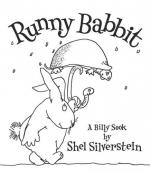Now, as one of the squirearchy, greeted with honorable salutations by the villagers, he marched into his office, and peace and dignity were upon him, and the morning’s dissonances all unheard.
They were heard again, immediately.
Stanley Graff, the outside salesman, was talking on the telephone with tragic lack of that firm manner which disciplines clients: “Say, uh, I think I got just the house that would suit you—the Percival House, in Linton.... Oh, you’ve seen it. Well, how’d it strike you?... Huh? ...Oh,” irresolutely, “oh, I see.”
As Babbitt marched into his private room, a coop with semi-partition of oak and frosted glass, at the back of the office, he reflected how hard it was to find employees who had his own faith that he was going to make sales.
There were nine members of the staff, besides Babbitt and his partner and father-in-law, Henry Thompson, who rarely came to the office. The nine were Stanley Graff, the outside salesman—a youngish man given to cigarettes and the playing of pool; old Mat Penniman, general utility man, collector of rents and salesman of insurance—broken, silent, gray; a mystery, reputed to have been a “crack” real-estate man with a firm of his own in haughty Brooklyn; Chester Kirby Laylock, resident salesman out at the Glen Oriole acreage development—an enthusiastic person with a silky mustache and much family; Miss Theresa McGoun, the swift and rather pretty stenographer; Miss Wilberta Bannigan, the thick, slow, laborious accountant and file-clerk; and four freelance part-time commission salesmen.
As he looked from his own cage into the main room Babbitt mourned, “McGoun’s a good stenog., smart’s a whip, but Stan Graff and all those bums—” The zest of the spring morning was smothered in the stale office air.
Normally he admired the office, with a pleased surprise that he should have created this sure lovely thing; normally he was stimulated by the clean newness of it and the air of bustle; but to-day it seemed flat—the tiled floor, like a bathroom, the ocher-colored metal ceiling, the faded maps on the hard plaster walls, the chairs of varnished pale oak, the desks and filing-cabinets of steel painted in olive drab. It was a vault, a steel chapel where loafing and laughter were raw sin.
He hadn’t even any satisfaction in the new water-cooler! And it was the very best of water-coolers, up-to-date, scientific, and right-thinking. It had cost a great deal of money (in itself a virtue). It possessed a non-conducting fiber ice-container, a porcelain water-jar (guaranteed hygienic), a drip-less non-clogging sanitary faucet, and machine-painted decorations in two tones of gold. He looked down the relentless stretch of tiled floor at the water-cooler, and assured himself that no tenant of the Reeves Building had a more expensive one, but he could not recapture the feeling of social superiority it had given him. He astoundingly grunted, “I’d like to beat it off to the woods right now. And loaf all day. And go to Gunch’s again to-night, and play poker, and cuss as much as I feel like, and drink a hundred and nine-thousand bottles of beer.”




